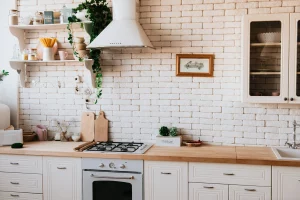Biohabitability is a discipline that studies, measures and evaluates the environmental factors that impact our health. Biohabitability describes spaces that achieve to be livable from a human biology point of view. Applying biohabitability is all about learning how our organism works and applying it to our indoors to obtain biotic spaces. The technological advances made in construction during the past decades have, accidentally, been working in the opposite direction. This has raised the need to bring forward biohabitability in our built environment.
“Health is the unit that gives value to all the zeroes in life” – Bernard Le Bovier De Fontelle
During the seventies, due to the increase in energy prices, buildings evolved to become more hermetic, severely sealed and better insulated to make them more energetically efficient. While this happened, synthetic furniture and coatings started to make their way into our interiors. Carpets, paints, flooring, countertops, varnishes, and a long list of elements came packed with wild cocktails of toxic substances which we are now being discovered to be harmful to our health. The combination of these two measures, creating spaces with a whole lot less ventilation and a higher concentration of indoor pollutants, has led to a deterioration in our indoor environment quality (IEQ).
Not long after this, during the eighties, the World Health Organization (WHO) pointed out a series of recurrent symptoms amongst people working long hours in newly built offices: nauseas, asthma, allergies, headaches, eye or throat irritation, cough, fatigue, … Symptoms which, curious enough, disappeared during the weekend or as soon as people returned home. That’s how the Sick Building Syndrome was named and used to describe buildings that sicken their users. Bad air quality, inadequate lighting, excess of CO2 in the air, bad ventilation, acoustic contamination, high electrostaticity or low humidity are some of many factors that can make a building sick.

Our health is tightly related to IEQ of our usual spaces. If the surrounding environment is biotic -in other words, favorable to our biology-, we’ll feel at ease as the space will be promoting an optimal state of comfort, wellbeing and health. On the other hand, if the indoor environment is filled with risk factors and toxic elements -even at doses that are considered low-, living and working in that space can end up interfering in our organism’s balance.
The factors that impact on IEQ can be classified into three groups: biologic, chemical and physical. Biologic factors are kinder to work with in the sense that the cause-effect is a lot more obvious. When you have mold or bacteria at home, symptoms on users are pretty immediate, and the source of those symptoms is easy to identify and act upon. On the other hand, we can be exposed to chemicals such as carbon monoxide or VOCs and not realize at all. The same can happen with physical factors such as radon gas exposure or the presence of strong electromagnetic fields. All of these, apart from going unnoticed, usually take decades to start showing symptoms on users and the symptoms can sometimes be somewhat vague. Educating people on this subject and distributing the necessary information is the best tool to start promoting the demand and construction of healthier spaces – indoors designed with biohabitability criteria.

As Winston Churchill said, we shape our homes and then they shape us. The raising awareness of this, especially after the sanitary emergency and global lockdown we recently went through, has promoted new disciplines such as environmental medicine or biology of construction. It’s still hard to define how exactly our buildings impact our health as the relation between one another isn’t lineal but there’s no doubt that our surroundings play a key role. Scientists point out that our health is often more related to our postal rather than genetic code. That’s why beside the term genome, we now have the exposome, which is defined as the combination of environmental factors to which we are exposed throughout our lifetime. The exposome includes what we eat, drink, our cosmetics, and our indoor spaces, amongst others. To give you an idea of how important it is to live in biotic spaces -this is, following biohabitability criteria- a study carried out by YouGov for Velux, after more than 16000 interviews around more than 14 countries, showed we spend more than 21h daily indoors, which accounts for 90% of our time.
According to Mariano Bueno’s estimates, one of the world’s pioneers in biohabitability, believes that our health is defined 5-10% by our genetics, 25-30% by our environment and 60-70% by lifestyle. This is great news given that the most influential factors are those upon which we have the most power. Our bodies have protective and self-regulation mechanisms, there’s no need to become excessively obsessed with all potential health menaces around us. We just need to avoid overexposure to what’s bad for us and embrace healthy lifestyle habits and environments so our body can continue to work well. Being familiarized with the issues in our indoor environments will allow us to learn to recognize them and avoid them as much as possible, giving us the chance of choosing the most biotic and healthy options.
I saved the best for last, and that is that indoor health comes hand in hand with environmental sustainability. The measures we take to improve our health are most of the time beneficial for the planet, and vice versa. Maybe if we had approached fixing construction by starting with our own wellbeing rather that the planet’s, people would have felt it as a less alien issue and begun to act sooner, but it’s not too late! Decide to take care of the planet or your own health, whichever works for you, results won’t differ.



